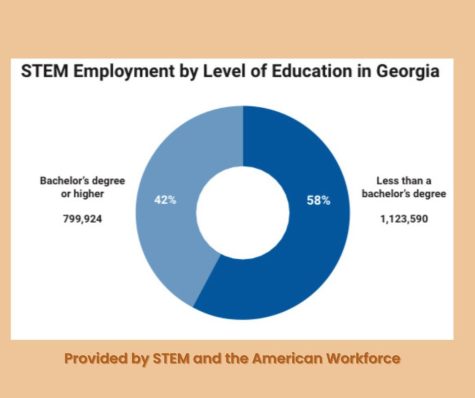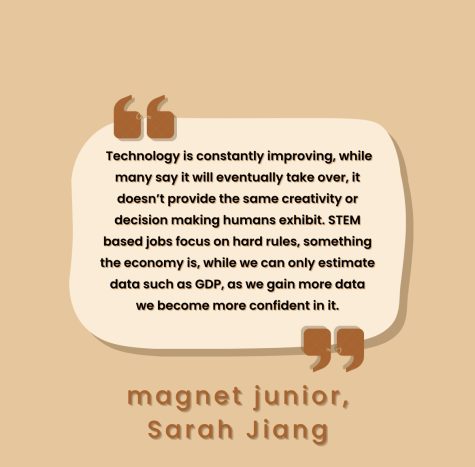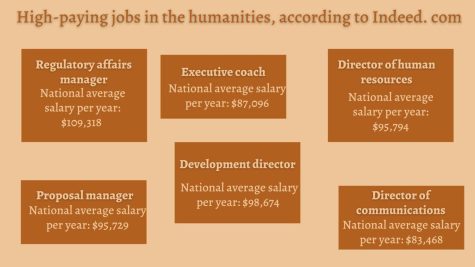Your donation will support the student journalists of North Cobb High School. Your contribution will allow us to purchase equipment and cover our annual website hosting costs.
In defense of the humanities
April 25, 2023
Similar to what its prefix suggests, the discipline of humanities focuses on aspects of human culture surrounding written works, philosophy, linguistics, the arts and history. This broad category serves as the basis for numerous career choices: from archeology to language interpretation. With a variety of options and opportunities, the humanities hold the potential for people to interpret the world in a diverse array of ways. However, despite the broad bandwidth this specialty provides, due to the financial and futuristic aspects of other career paths, the light slowly begins to dim on the importance of the humanities.
As soon as writers and scholars could put pen to paper– or clay tokens or animal hides– the study of the humanities occupied substantial space in the minds of early scholars. From the evocative art of the ancient Greeks to the Renaissance-era works of Marsilio Ficino and Gemistos Plethon, to enlightened poems like The Aeneid, the humanities encouraged and celebrated the ideas and progressive thinking the humanities offered. This attitude progressed as societies all over the globe advanced, and careers in the field became increasingly popular. The 1700s witnessed the rise of journal keeping, with diarists publishing their personal works for consumption by the masses. Throughout the 1920s, teaching possessed the second highest number of employed women in the workforce, with stenographers and typewriters standing in the number three slot; nearly a century later in the 2010s, historians sat as the fifth best job in America. However, the career market grew into the modern day, and the amount of humanities jobs started to shift.
“They [humanities careers] definitely are on the decline. This can be seen with there being no philosophy classes, foreign language classes being optional in order to graduate, and culture and the human experience not being explored in school as much as observational and ‘hard’ science and logic. Science is still important and so if we think logically, we should be able to think in ways that aren’t supported by the curriculum,” magnet sophomore Maksymillian Bardwell said.

In the 2020s, the job market as a whole set its sights on a newer, hotter field– STEM. The acronym for science, technology, engineering and math coincides with the rampant advances in medicinal, mechanical and machinery thus far in the decade. To its credit, the rise of the STEM industry delivers numerous economic benefits to its connoisseurs and constituents. In the United States, STEM careers underpin 67% percent of jobs; in Georgia, the industry sources 62% of careers, with 1,923,514 jobs directly tied to the application. In an article by the US News & World Report, they list the foremost STEM careers as software development, nurse practitioner and medical and health services management.
In recent years, artificial intelligence (AI) found room in the healthcare industry by aiding biopsies and the maturation of medications. In an article by the International Business Machines Corporation (IBM), they aptly describe the benefits of AI through its ability to minimize fallacies and encourage communication between medical personnel and the citizens they aid.
With the rise of STEM in the American and global economy, careers in the humanitarian sector faced the all-to-familiar fate of fading into the background. In a study conducted by the National Science Board (NSB) in 2019, STEM careers reportedly grew 2.3 percent between the years 2010-2019. The same study also looked ten years into the future, with the predicted broadening in the field. Experts expect healthcare practitioners, for example, to grow 13 percent. As the field continues its upward trajectory, careers in the humanities lose traction. The Hechinger Report features an article that articulates the decline in humanities careers, reporting that the number of English majors dropped from 55,000 to 37,000 between 2009 to 2020.

These jobs also represent a rewarding payout for employees, with a handful of highest-paying jobs of 2023 belonging to medicinal fields such as anesthesiology and gynecology. The skyrocketing of STEM careers creates a financial imbalance between its perception against careers in the humanities. According to data released by ZipRecruiter, the national average for this job field in 2023 stands at $52,656 per year. This staggeringly contradicts the monetary compensation that the STEM industry affords. For example, a Computer and Information Research Scientist could make $119,854–the median salary for the field– annually. However, in lieu of the pay imbalances between the fields, the humanities possess their own share of jobs that allow their participants to provide for their families, albeit less lucratively.
In the absence of futurism and financial bounty, however, the humanities provide its connoisseurs an outlet to express themselves creatively, and without resistance. Careers in STEM possess clear restrictions and rules. While the calculated nature of mathematical equations or chemical compounds stands as defining and necessary attributes, the fluidity of the humanities allows for further interpretation on a greater scale. The humanities also offer a glimpse into the rawness of human emotion. In careers that center on creative expression, journalists or artists pull from their own experiences or ideas to candidly convey the reality of painful actuality. The humanities also encourage the breaking of barriers, a luxury that compromises the integrity of the STEM field. In order for an experiment to not end up in flames, scientists must follow exact instructions. While jobs also offer guidelines and rules in humanities, they provide a safe space to express oneself without fear of dire consequences.

Additionally, the success of the humanities careers does not mean that the field lacks individuals interested in it. Patrons of the humanities field seek it out due to their passion for it, as opposed to the paychecks they may see during future career endeavors. As stated in an article by the National Center for Education Statistics, social sciences and history stood as the third highest major for students attaining bachelor’s degrees between 2009 to 2020. Students still engage with the field due to a fundamental interest in it. Without the drive to pursue the humanities, involvement within it ceases to exist— but through any amount of students involved, it may thrive, despite the decrease from years past.
“I wish to become a teacher in the future, and this was heavily influenced by my love for history and the study of culture. The humanities are my entire motivation for my entire career choice, and I see myself as a productive teacher. I feel that through this field, and the humanities, I can have a good career,” magnet sophomore Jack Brillinger said.
